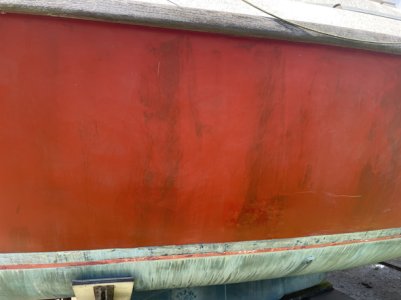Tiger Moth
New member
I've just bought a Caravela 22 which probably hasn't been in the water for about 20 years. It's in good order considering but the gelcoat has dark staining, whether from an old cover or staining from rainwater I don't know.
Cream kitchen cleaner has taken the initial dullness off but not the staining. T-Cut bounced off and the expensive jollup that you paint on and wash off also failed miserably. Has anyone had the same problem and met with any success? If so, please tell me how. I'd really prefer not to have to paint as I've always hated seeing the dimpled finish of a roller painted hull.
Cream kitchen cleaner has taken the initial dullness off but not the staining. T-Cut bounced off and the expensive jollup that you paint on and wash off also failed miserably. Has anyone had the same problem and met with any success? If so, please tell me how. I'd really prefer not to have to paint as I've always hated seeing the dimpled finish of a roller painted hull.

